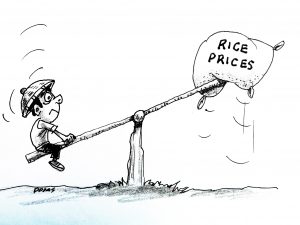Contrary to the campaign promise of then-presidential candidate, Ferdinand “Bongbogn” Marcos Jr. that he would bring down the price of rice, the same has instead sky-rocketed in recent days, impacting the lives of Filipinos especially those who belong to the have-nots who, unfortunately, comprise the bigger portion of society.
With rice as the staple food in the Philippines, it is no surprise that the average Filipino who consumes several kilograms of rice per year would suffer adverse effects with the recent increases in rice prices. It is an important diet for the Filipino population, thus, there must be major effects on the various sectors particularly the poor.
One such effect is the impact on household budgets. As rice comprises a significant portion of the average Filipino’s diet, any price increase can directly affect households’ purchasing power. This can lead to a decrease in overall food consumption, as families may be forced to cut back on other essentials to afford rice. This, in turn, can negatively affect nutrition and health outcomes for vulnerable populations.
The increase in rice prices can also have ripple effects on the economy as a whole. With a large portion of the population dependent on rice as a staple food, any significant increase in its price can lead to inflationary pressures. This can result in higher prices for other goods and services, leading to decreased consumer spending and economic growth.
Additionally, higher rice prices can also impact the livelihoods of farmers, as they may face increased input costs without corresponding increases in their income.
Policymakers must address these issues through targeted interventions, such as subsidies for rice farmers or price stabilization mechanisms. The government can help mitigate the negative impacts of rice price increases and promote the well-being of its citizens by ensuring that rice remains affordable for all segments of society.




